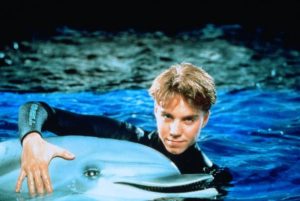Though we have yet to build underwater cities, the future depicted in the 1990’s sci-fi show seaQuest DSV now seems a little less far-fetched.
The Spielberg-produced series ran for three seasons and suffered from a disgruntled star (Jaws lead actor Roy Scheider), harsh critics, and massive re-tooling. However, its first season did attempt to inject real science into the show, even if that only meant Bob Ballard (the man who found the wreckage of the Titanic) providing information about the sea as the credits rolled.
Perhaps the most memorable part of the show (besides the late teen heartthrob Jonathan Brandis) was the “talking” dolphin Darwin. An electronic gadget created by Brandis’ character translated the dolphin’s sounds into human words (not entirely unlike what the text-to-speech on my Kindle does).
According to a recent tech article at Time, scientists are collaborating on a project called Cetacean Hearing and Telemetry (CHAT). According to the article, it works the following way:
divers will have computers and “twiddlers” (think underwater mouse-keyboard) as well as hydrophones (to pick up dolphin sounds) and special LEDs in their masks to indicate which direction a dolphin sound came from. When they start testing this summer, they’ll basically be learning and cataloguing sounds, from which pattern detection software–it’s hoped–will be able to identify the grammatical building blocks of dolphin-ese, be that word or signal based.
I suppose it sounds a little more like a Rosetta Stone than a futuristic translator, but it is a step towards being able to communicate with dolphins beyond using hand signals and whistles. And, it could also lead the way to communicating with other species.
Still, I don’t think anything will ever be as cute as Darwin the dolphin and hunky Jonathan Brandis hanging out on the seaQuest. Call me nostalgic, but I really loved that show.
